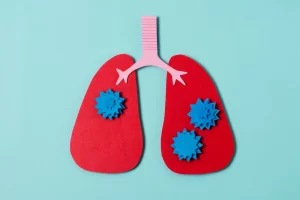 Pulmonary embolism (PE) is a life-threatening condition caused by the blockage of one or more arteries in the lungs.
Pulmonary embolism (PE) is a life-threatening condition caused by the blockage of one or more arteries in the lungs.
This occurs when blood clots, usually from the legs, travel to the lungs and impede blood flow, leading to severe consequences.
Understanding its signs, causes, and treatment is crucial in preventing fatalities.
Signs of Pulmonary Embolism
PE symptoms can vary in intensity, making it challenging to diagnose. Common signs include:
- sudden shortness of breath,
- chest pain (especially when breathing deeply),
- rapid or irregular heartbeat,
- coughing with blood,
- and fainting.
Due to these vague symptoms, PE is often misdiagnosed or overlooked, making it essential to be vigilant and seek immediate medical attention if any of these signs manifest.
Causes of PE
PE typically results from deep vein thrombosis (DVT), where blood clots form in the deep veins, commonly in the legs. These clots may break loose and travel through the bloodstream to the lungs, causing the blockage.
Several factors increase the risk of developing DVT and PE, including:
- prolonged immobilization,
- surgery,
- trauma,
- obesity,
- smoking,
- pregnancy,
- and certain medical conditions like cancer and cardiovascular diseases.
Treatment for PE
The primary goal of PE treatment is to dissolve or remove the blood clot while preventing further clot formation. Depending on the severity of the condition, treatment options include:
- Anticoagulant Medications. These blood-thinning drugs, such as heparin and warfarin, help prevent the growth of clots and allow the body’s natural processes to dissolve them.
- Thrombolytic Therapy. In severe cases, clot-dissolving medications may be administered intravenously to rapidly dissolve the clots.
- Surgical Embolectomy. A surgical procedure to remove large clots when other treatments are ineffective or impractical.
- Inferior Vena Cava (IVC) Filter. A device is implanted in the vena cava to trap clots before they reach the lungs.
Preventing PE involves adopting a healthy lifestyle, staying active, avoiding prolonged immobility, and managing underlying risk factors.
Recognizing the signs of PE and seeking prompt medical attention is crucial for early diagnosis and successful treatment.
Picture Credit: Freepik
